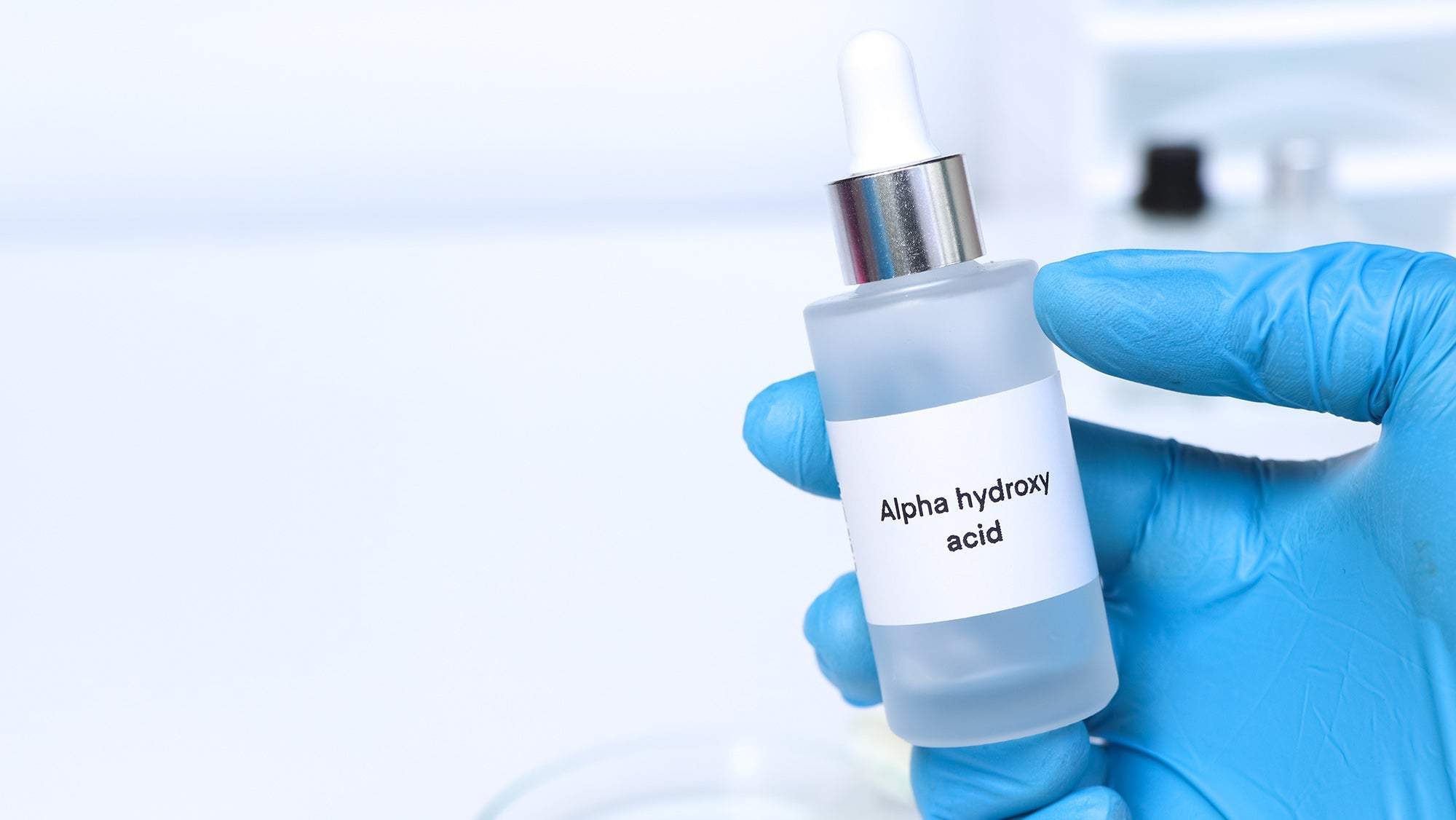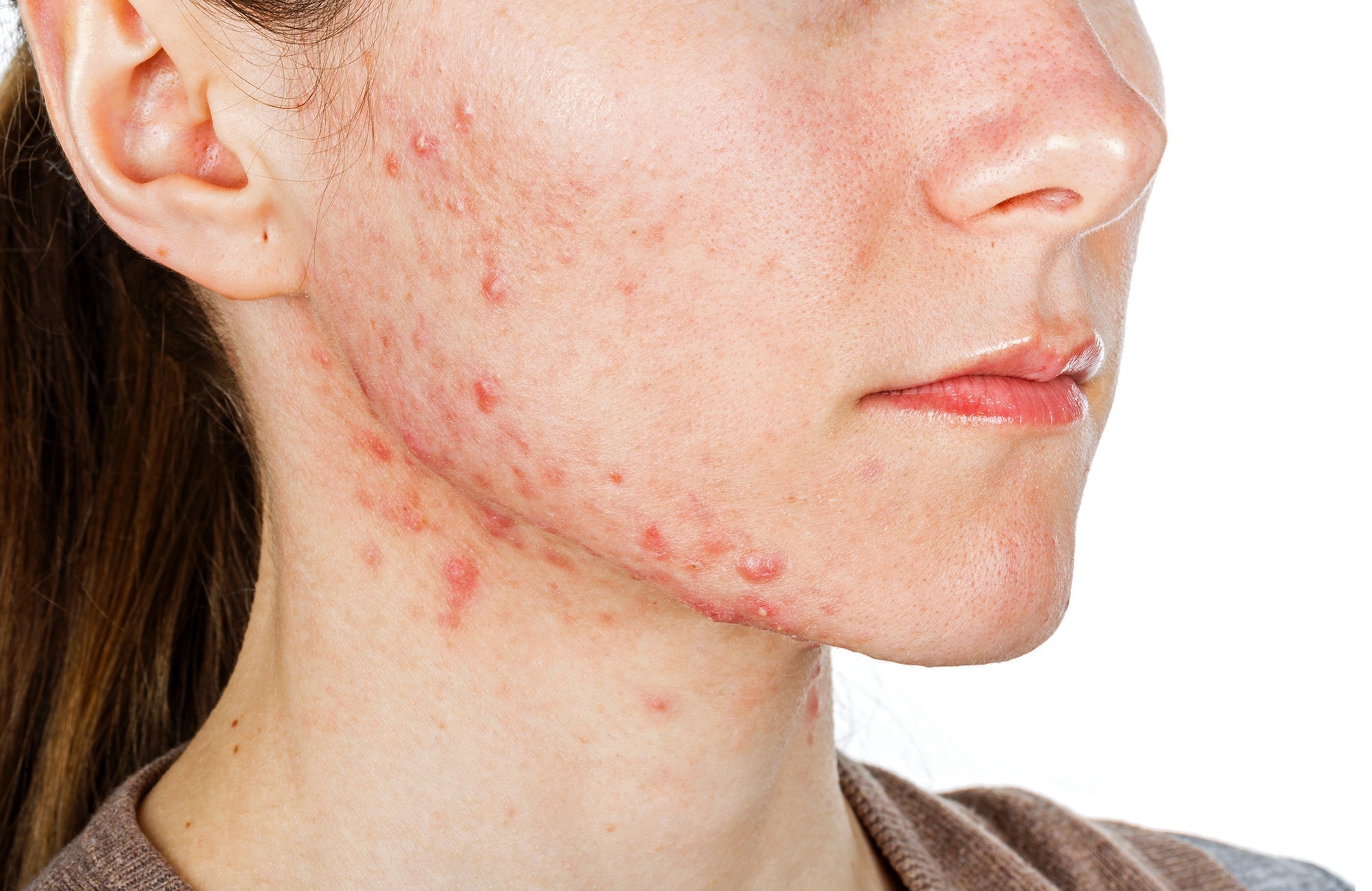If you’ve ever wondered ‘What does AHA do for skin?’, the short answer is this: it helps remove dead skin cells, promote cell turnover and reveal a smoother, brighter complexion. Alpha Hydroxy Acids (AHAs) have become a staple in modern skincare for their ability to improve skin texture, tone and clarity, making them a powerful ingredient in treating dullness, uneven skin tone and signs of ageing.
But what exactly are AHAs, and how do they work?
Understanding Alpha Hydroxy Acids (AHAs)
Alpha Hydroxy Acids are a group of naturally occurring acids commonly found in fruits, milk and sugar cane. In skincare, they’re primarily used for their exfoliating properties. Some of the most common AHAs include:
-
Glycolic Acid: Derived from sugar cane, known for its small molecule size and deep penetration.
-
Lactic Acid: Derived from milk, offers gentle exfoliation and added hydration.
-
Citric Acid: From citrus fruits, often used for pH balance and brightening.

What does AHA do for skin? It promotes natural exfoliation and reveals a smoother, brighter complexion beneath the surface.
How AHA Works on Skin
AHAs work by loosening the bonds between dead skin cells on the skin’s surface, allowing them to shed more easily. This chemical exfoliation reveals fresh skin underneath and supports better absorption of other active ingredients.
Key skin benefits of AHA include:
-
Smoother skin texture
-
Brighter, more even tone
-
Improved hydration and product penetration
-
Reduced appearance of fine lines and pigmentation
-
Gentle resurfacing without physical scrubbing
Benefits of AHA in a Skincare Routine
Incorporating AHAs into your routine can support a wide range of skin concerns:
- Dullness: AHA clears away dead skin cells that can leave skin looking tired or ashy.
- Congestion and Breakouts: By keeping pores clear, AHAs can reduce blackheads and prevent build-up.
- Uneven Skin Tone: Regular use of AHA can help fade post-inflammatory pigmentation and sun damage.
- Ageing Skin: AHAs improve elasticity and reduce the visibility of fine lines through ongoing stimulation of collagen renewal.
Choosing the Right AHA for Your Skin
Not all AHAs are created equal. Some are better suited for sensitive skin (like lactic acid), while others (like glycolic acid) are ideal for more robust exfoliation. The key is finding the right concentration and formulation for your skin type and concerns.

What does AHA do for skin during cleansing? It removes dead skin cells and preps the skin for better absorption of active ingredients.
How to Use AHA Safely
Although AHAs offer clear benefits, they must be used properly to avoid irritation or sensitivity:
-
Start slow: Introduce AHAs gradually, 2 to 3 times a week and monitor your skin’s response.
-
Pair with SPF: AHAs can increase sun sensitivity, so daily sun protection is essential.
-
Avoid layering with strong actives: Using AHAs alongside retinol or vitamin C may cause irritation unless advised by a professional.
AHA-Infused Skincare from allmedic
If you're looking for reliable, science-backed formulations that harness the power of AHAs, allmedic offers a targeted range designed to promote skin renewal and clarity. Each product combines glycolic acid with ingredients like niacinamide, salicylic acid and antioxidants to help exfoliate, hydrate and support clearer, healthier-looking skin.
Here are a few standout options:
-
Active Exfoliating Scrub – 12% Glycolic Acid + Salicylic Acid for deep exfoliation
-
Skin Repair Cream – Combines AHA with niacinamide for hydration and barrier support
-
Active Cleanser – A gentle blend of glycolic and lactic acids for daily use
-
Acne Clear Night Exfoliating Lotion – Ideal for acne-prone skin, with AHA and BHA to exfoliate and unclog pores
These formulations are developed by Australian medical professionals with a focus on treating skin concerns like acne, pigmentation and uneven tone, making them a smart choice for anyone wanting to integrate AHAs into a structured skincare routine.
Final Thoughts: Glowing Skin Starts with the Right Ingredients
Whether you’re new to chemical exfoliants or looking to refine your current regimen, Alpha Hydroxy Acids can offer a safe, effective way to achieve a smoother, clearer complexion. By removing dead skin cells and encouraging renewal, AHAs are a key ingredient in achieving healthier skin long-term.
For those seeking professional-grade skincare with proven results, exploring allmedic’s AHA-based products is a great place to start.
FAQs
Is AHA good for sensitive skin?
AHA can be suitable for sensitive skin when used in lower concentrations and buffered formulas like lactic acid. Start slowly and monitor your skin’s response.
How to use AHA in skincare routine?
Use AHA after cleansing but before moisturiser. Begin with 2–3 times a week, then increase as tolerated. Always follow with sunscreen during the day.
What are the benefits of alpha hydroxy acid?
Alpha hydroxy acids help exfoliate dead skin cells, improve skin tone and texture, reduce pigmentation and support hydration and product absorption.
Can AHA help with acne scars and pigmentation?
Yes. AHAs like glycolic acid support the fading of post-inflammatory hyperpigmentation and smooth out uneven texture caused by past breakouts.
Should you use AHA every day?
It depends on the formulation and your skin type. Some gentle AHAs can be used daily, but most people benefit from 2 to 4 uses per week to avoid irritation.


